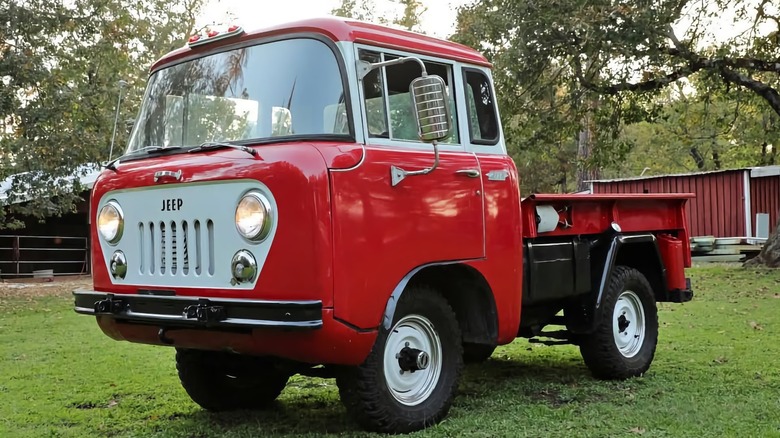
Today's Good Deal or Nothing The Jeep pickup was crafted by the renowned industrial designer Brooks Stevens himself. Now we must determine whether its cost is intended to attract buyers.
Corn, also known correctly as maize, is a cereal grain originally found in the Americas but has become a crucial crop worldwide. Native people in southern Mexico first cultivated it roughly nine hundred years ago, making it an essential component of global agriculture due to its versatility. In the United States, this crop plays multiple roles; it acts as both animal fodder and the foundation for popular foods like corn tortillas used in street tacos—arguably some of the finest cuisine out there—as well as being processed into grain alcohol which gets mixed with petrol-derived gasoline to reduce reliance on non-renewable resources. 2010 Saab 9-5 BioPower What we examined yesterday was a peculiarly named vehicle engineered specifically to operate using the strongest blend of ethanol (E85). Throughout its existence, it had consumed sufficient amounts of this fuel to log an astounding 220,000 miles. Prepared now to accumulate many more miles behind it, it appeared on Craigslist seeking $2,950. This price turned out well for most of you, as evidenced by your 76% Nice Price victory over the Saab.
Read more: These Vehicles Attract Police Attention
Ahead Of The Game
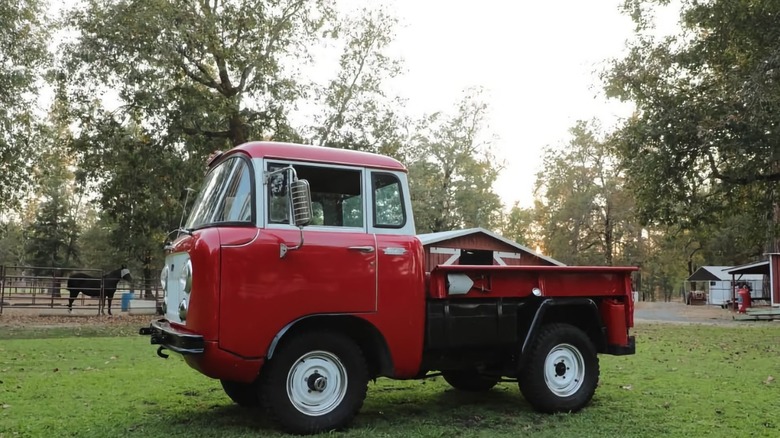
Some have argued—it was even proposed by none other than General Dwight D. Eisenhower at the time—that one significant factor behind the Allied victory in World War II was the Willys Jeep. This vehicle not only played an essential role during wartime but also left a lasting impact post-war period. It stands out as the sole military vehicle of that epoch to successfully shift into mainstream civilian use. Remarkably, this transformation occurred independently of the benefits provided through the GI Bill.
The buckboard was sturdy yet cramped, and the CJ, short for Civilian Jeep, catered to a niche audience during its early days. This narrow appeal made it financially unsustainable for Willys, prompting them to introduce more models aimed at attracting fresh customers and satisfying their current base.
A prime example of this was the Forward Control pickup truck, which debuted as part of the 1956 models. Built upon the foundation of the CJ-5 and featuring an identical short 81-inch wheelbase, the initial FC-150 stood out because it provided a complete six-foot cargo area within a framework that was more than a foot shorter compared to a Volkswagen Beetle. This achievement came about from positioning the two-seater cabin directly above the front wheels, with the engine placed snugly between the driver and passenger seats—hence the term "Forward Control." Subsequent iterations included extended wheelbases along with extra amenities, yet this remained distinctive. 1958 FC-150 reflects the simplest version of the model.
Hurricane
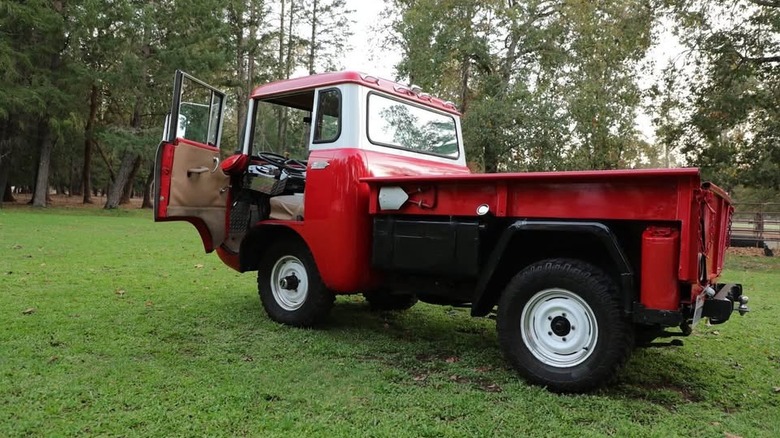
The power for the FC originates from Willys' 134 cubic inch F-head four-cylinder engine, which the company dubbed the somewhat mockingly titled "Hurricane Four." This setup produces 72 horsepower and 112 pound-feet of torque (these figures being gross measurements), resulting in a claimed acceleration from zero to sixty miles per hour that borders on the unrealistic and a top speed that seems equally unlikely for a vehicle weighing two-and-a-half tons.
The early FC models featured a three-speed manual transmission, which was common to the CJ-5 as well; however, starting from this particular model year, they switched to using a four-speed gearbox instead. A two-speed transfer case sits behind it, sending power through leaf-sprung live axles located at each end of the vehicle. Drum brakes are used throughout for stopping, accompanied by copious amounts of prayer during operation. Steering is managed via a recirculating ball mechanism housed within an almost perpendicular steering column inside the cabin. Safety features include relying solely on one’s own body parts like knees along with additional prayers for protection. According to the advertisement provided, details about the current state of this specific FC’s mechanics remain undisclosed except for mentioning incorrectly that just 400 units had been produced under this same model designation.
Cute As A Bug
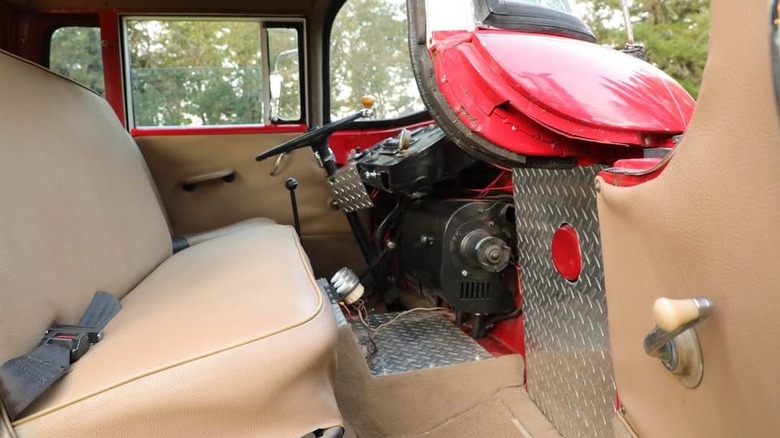
In any case, the photographs clearly show that this red and white model with a tan vinyl interior appears to be well-restored and in excellent condition. It’s very probable that its mechanics are equally impressive. The design of the FC was managed by Brooks Stevens, who also assisted Jeep in crafting both the Jeepster and the Wagoneer. Crafting the FC would have posed quite a challenge due to its proportions being rather ungainly; hence, making it look anything but silly might have seemed nearly impossible.
As mentioned, the FC now appears quite "adorably awkward" and evokes memories of its potential follow-up, which remains uncertain and unpredictable. Telo electric pickup That contemporary interpretation of the small pickup provides more passenger space compared to the FC model; however, this comes with trade-offs such as a reduced cargo area and an increased total vehicle length. According to its listing, the FC is described as being in "Good" condition and boasts extensive use of diamond-plate material inside the cabin—consistent with vintage Jeep aesthetics. It includes both the original dashboard-mounted heater and additional gauges awkwardly connected to the engine block. On one side of the bed lies a stowed spare tire, opposite which sits the fuel tank. Foldable camping shovels are attached to either interior face of the bed walls, whereas inexplicably placed door handles from a home improvement store adorn the rear section of the cabin.
Pay It Forward?
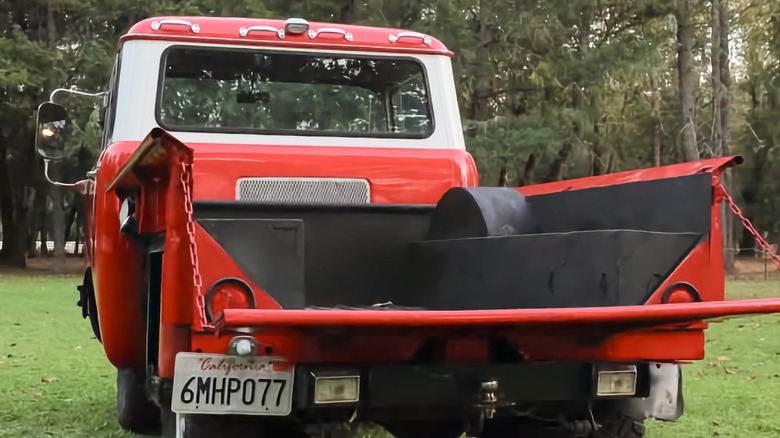
As mentioned earlier, the advertisement’s description is even more concise than the truck itself. It lacks details about the vehicle's title status, the duration since its last renovation, and mileage. The license plate suggests it originated from California, yet it's currently listed in Cave Junction, Oregon, indicating it may have crossed state lines at one point. Given these circumstances, we will simply have to assess whether this FC is worth the asking price of $22,000 by examining the photos and relying on intuition.
What do you think about this unusual Jeep with its $22K price tag? After viewing the photos and thinking about how enjoyable it could be at car meet-ups and Jeep events, does it seem like a good deal? Or does it come off as not such a great offer for this forward control truck?
You decide!
Good Deal or Nothing:
Cave Junction Facebook Marketplace , or go here if the ad disappears.
Thanks goes to Bill Lyons for hooking us up!
Reach out to me regarding NPOND. Contact robemslie@gmail.com for a fixed-priced contribution. Don’t forget to add your commentator username.
Want more like this? Join the Jalopnik newsletter To receive the most recent automobile news directly in your mailbox...
Read the original article on Jalopnik .
